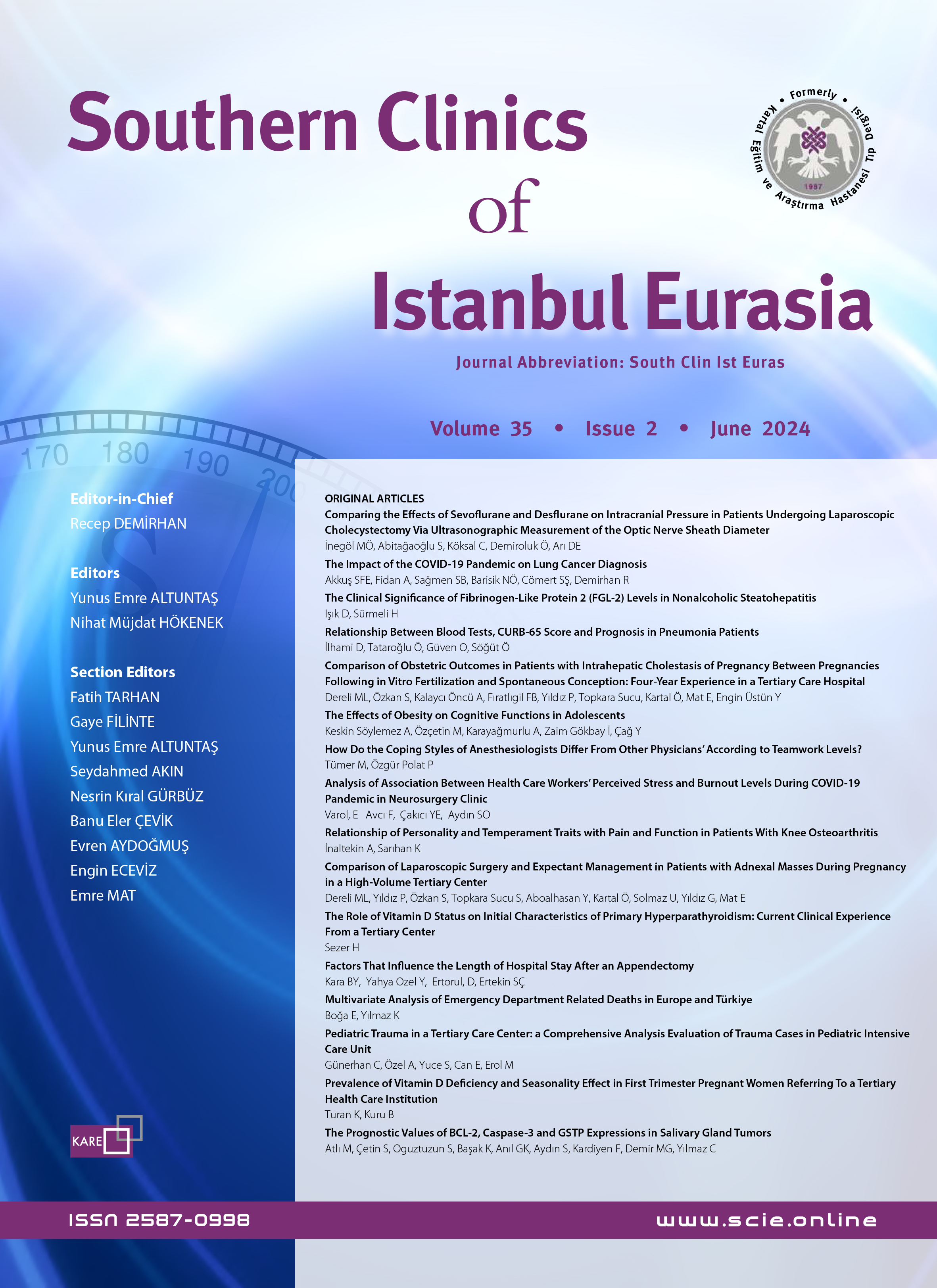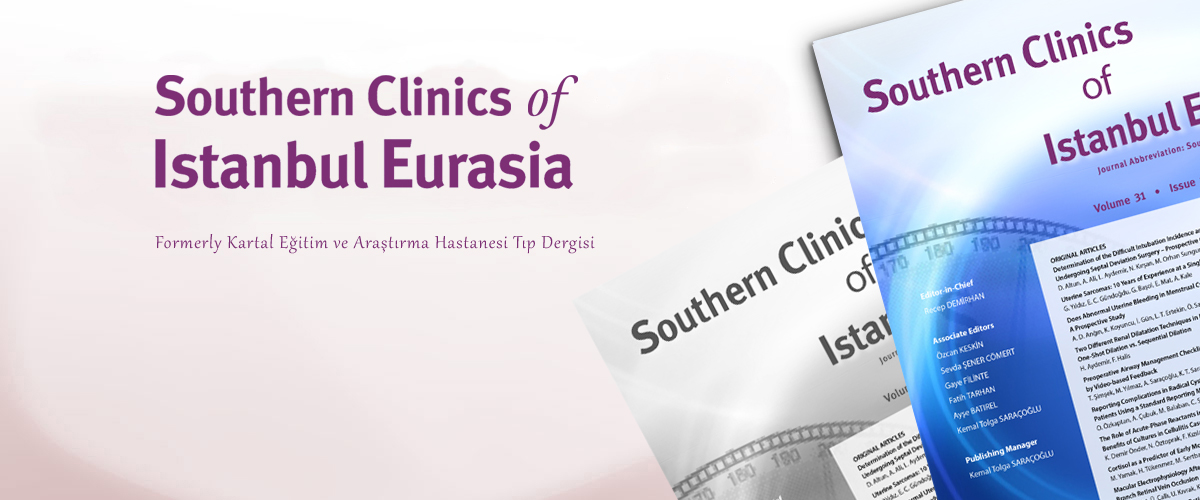ISSN : 2587-0998
Spinal anestezi uygulanan sezaryen seksiyolarda levobupivakaine ilave edilen fentanil ve morfinin etkileri
Müjge Hatun1, Gülten Arslan2, Feriha Temizel2, Hakan Erkal2, Hüsnü Süslü3, Yaman Özyurt4, Tamer Kuzucuoğlu2, Zuhal Arıkan51Sivas Devlet Hastanesi, Anesteziyoloji ve Reanimasyon Kliniği, Sivas2Dr. Lütfi Kırdar Kartal Eğitim ve Araştırma Hastanesi, Anesteziyoloji ve Reanimasyon Kliniği, İstanbul
3Maltepe Üniversitesi Tıp Fakültesi, Anesteziyoloji ve Reanimasyon Kliniği, İstanbul
4Özel Umut Hastanesi, Anesteziyoloji ve Reanimasyon Kliniği, İstanbul
5(Emekli) Dr. Lütfi Kırdar Kartal Eğitim ve Araştırma Hastanesi, Anesteziyoloji ve Reanimasyon Kliniği, İstanbul
AMAÇ: Çalışmamızın amacı spinal anestezi altında sezaryen ameliyatı geçirecek olgularda 10 mg levobupivakaine 10 mcg fentanil, 0.01 mg morfin veya salin eklenmesinin etkilerini
karşılaştırmaktır.
YÖNTEMLER: Spinal anestezi altında elektif sezaryen ameliyatı uygulanacak ASA I-II grubundaki 90 hasta rastgele olarak takip eden üç gruba ayrıldı. Grup L: 10 mg levobupivakain ve salin, Grup LF: 10 mg levobupivakain ve 10 mcg fentanil, Grup LM: 10 mg levobupivakain ve 0.01 mg morfin. Sensoryel ve motor blok başlama, geri dönüşüm zamanları, sensoryel blok seviyesi, sensoryel bloğun en yüksek seviyesi ve ulaşma zamanı, motor blok derecesi, çalışma ilaçlarının spinal enjeksiyonundan sonra 1., 5., 10., 15., 20., 25., 30., 35., 40. dklarda hemodinamik parametreler, görsel analog skala, ilk analjezik gereksinim zamanı, ilk 24 saatteki total analjezik gereksinimi, anestezi kalitesi, yan etkiler, umblikal arter kan gazları, APGAR skorları kaydedildi.
BULGULAR: Gruplar arasında demografik özellikler, APGAR skorları, umblikal arter kan gazları açısından farklılık bulunmadı. Sistolik arter basıncı ve görsel analog skala değerleri grup LFde daha fazla azalmış idi (p<0.05).
SONUÇ: Levobupivakaine eklenen fentanil ve morfinin kısaltılmış duyusal ve motor blok başlangıç zamanı, geliştirilmiş analjezi kalitesi oluşturması nedeniyle, sezaryen ameliyatı gibi kısa süreli girişimlerde spinal anestezi için daha iyi bir seçenek olabileceği kanısına varıldı.
The effects of addition of fentanyl or morphine to levobupivacaine in spinal anesthesia for cesarean section
Müjge Hatun1, Gülten Arslan2, Feriha Temizel2, Hakan Erkal2, Hüsnü Süslü3, Yaman Özyurt4, Tamer Kuzucuoğlu2, Zuhal Arıkan51Sivas State Hospital, Department of Anesthesiology and Reanimation, Sivas, Turkey2Dr. Lütfi Kırdar Kartal Training and Research Hospital, Department of Anesthesiology and Reanimation, Istanbul, Turkey
3Maltepe University Faculty of Medicine, Department of Anesthesiology and Reanimation, Istanbul, Turkey
4Private Umut Hospital, Department of Anesthesiology and Reanimation, Istanbul, Turkey
5(Retired) Dr. Lütfi Kırdar Kartal Training and Research Hospital, Department of Anesthesiology and Reanimation, Istanbul, Turkey
OBJECTIVE: The purpose of the study was to compare the effects of adding 0.01 mg of morphine, 10 mcg of fentanyl or saline to 10 mg of levobupivacaine in patients undergoing cesarean section under spinal anesthesia.
METHODS: Ninety American Society of Anesthesiologists (ASA) I-II patients undergoing elective cesarean section under spinal anesthesia were randomized into the following three groups:
Group L: 10 mg levobupivacaine and saline, Group LF: 10 mg levobupivacaine and 10 mcg fentanyl, and Group LM: 10 mg levobupivacaine and 0.01 mg morphine. Sensorial and motor block onset and recovery times, the level of sensory block, time to highest sensory block, highest sensory block level, the degree of motor block, hemodynamic parameters at 1, 5, 10, 15, 20, 25, 30, 35, and 40 minutes after spinal injection of the study drugs, visual
analogue scale, first analgesic requirement time, total analgesic requirement in the first 24 hours, anesthesia quality, side effects, umbilical artery blood gases, and APGAR scores were recorded.
RESULTS: There was no difference between groups in demographics, APGAR scores, or umbilical artery blood gases. Systolic arterial pressure and visual analog scale values were decreased in Group LF (p<0.05).
CONCLUSION: Due to the shortened sensorial and motor block onset times, for improved quality of anesthesia, we believe that addition of fentanyl or morphine to levobupivacaine may be a better choice for spinal anesthesia for short procedures such as cesarean section.
Makale Dili: Türkçe

























